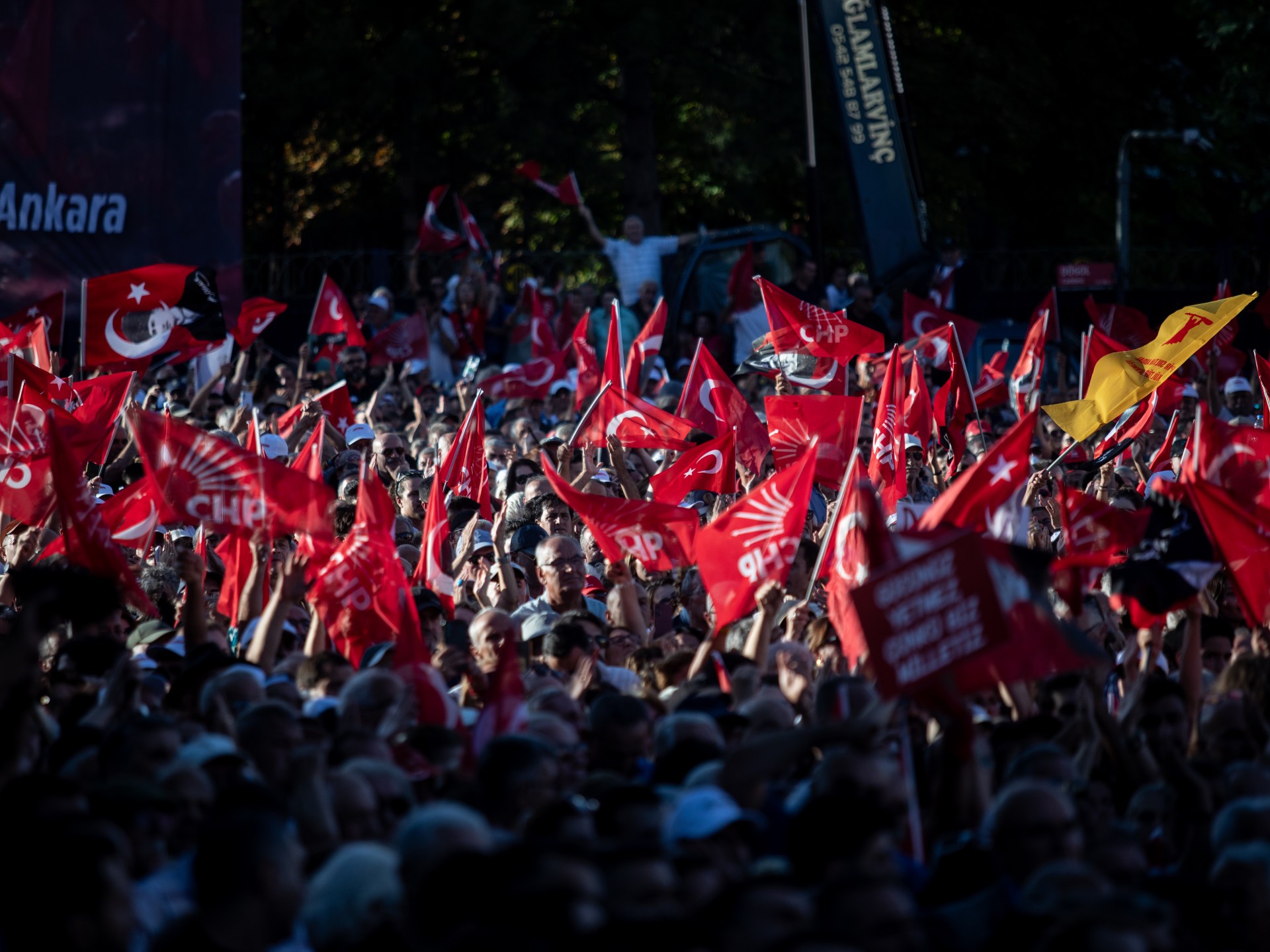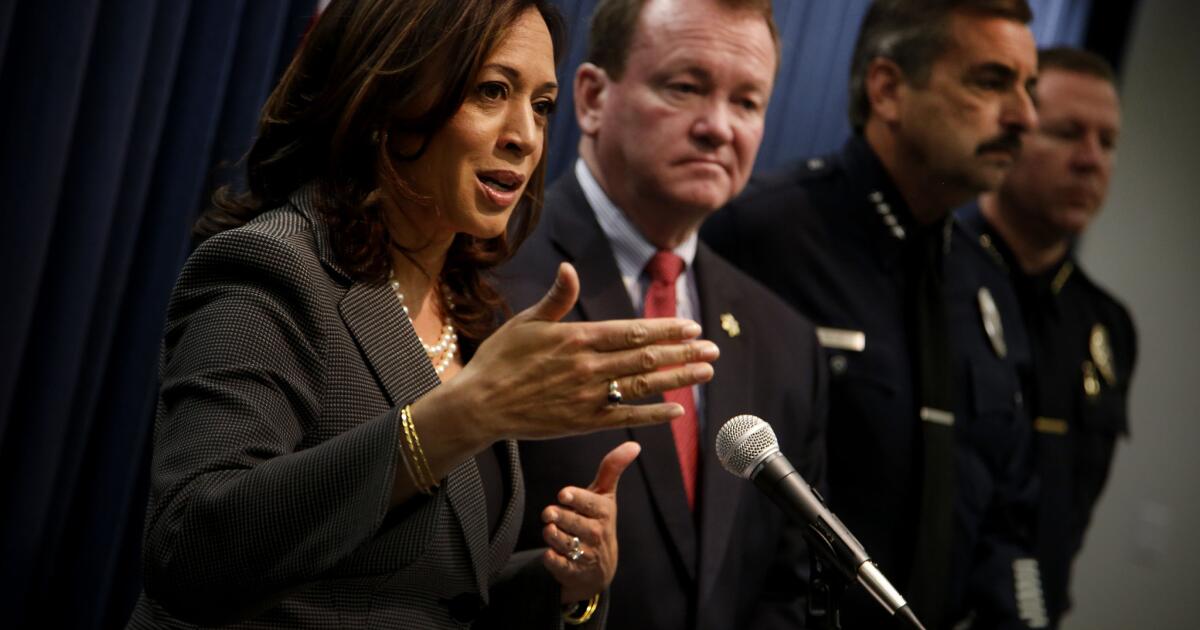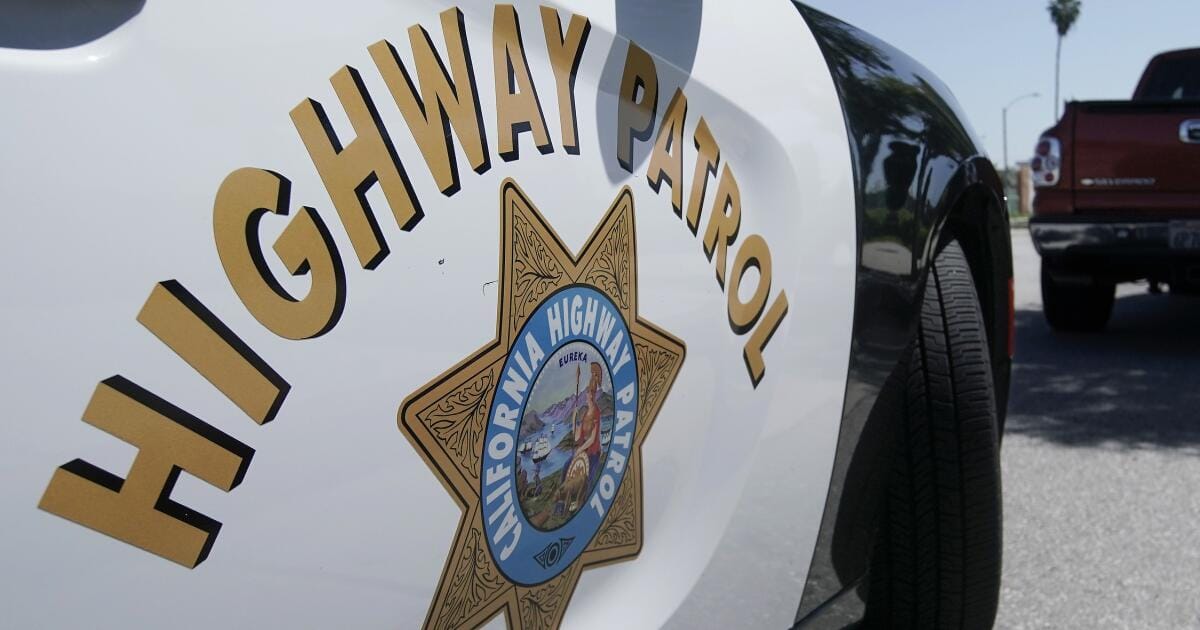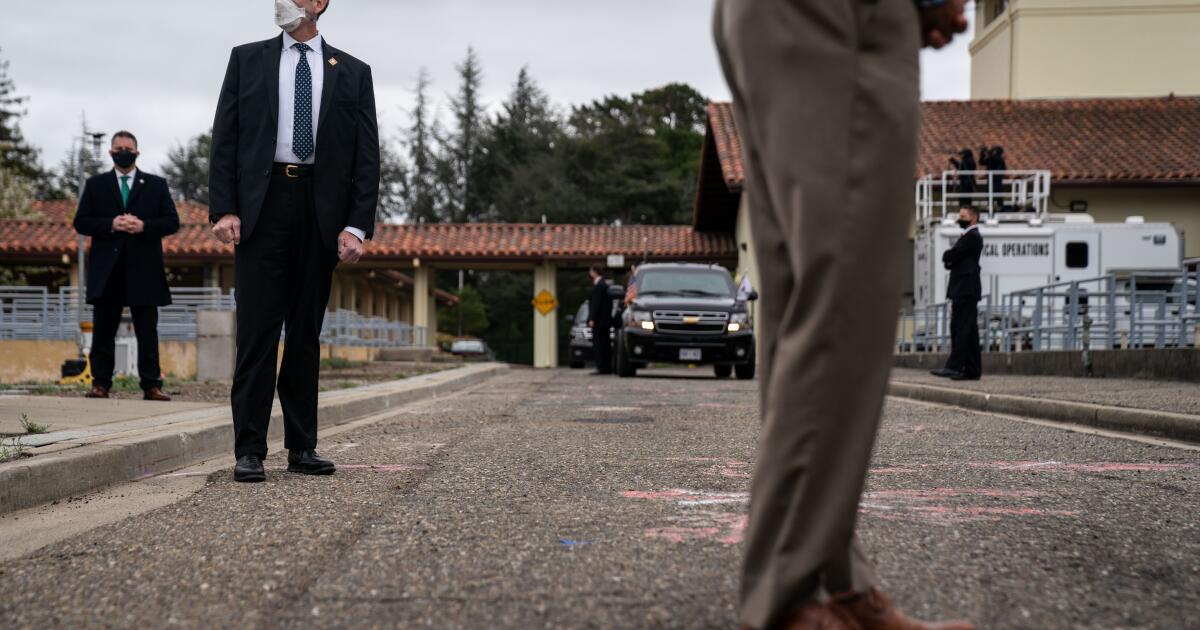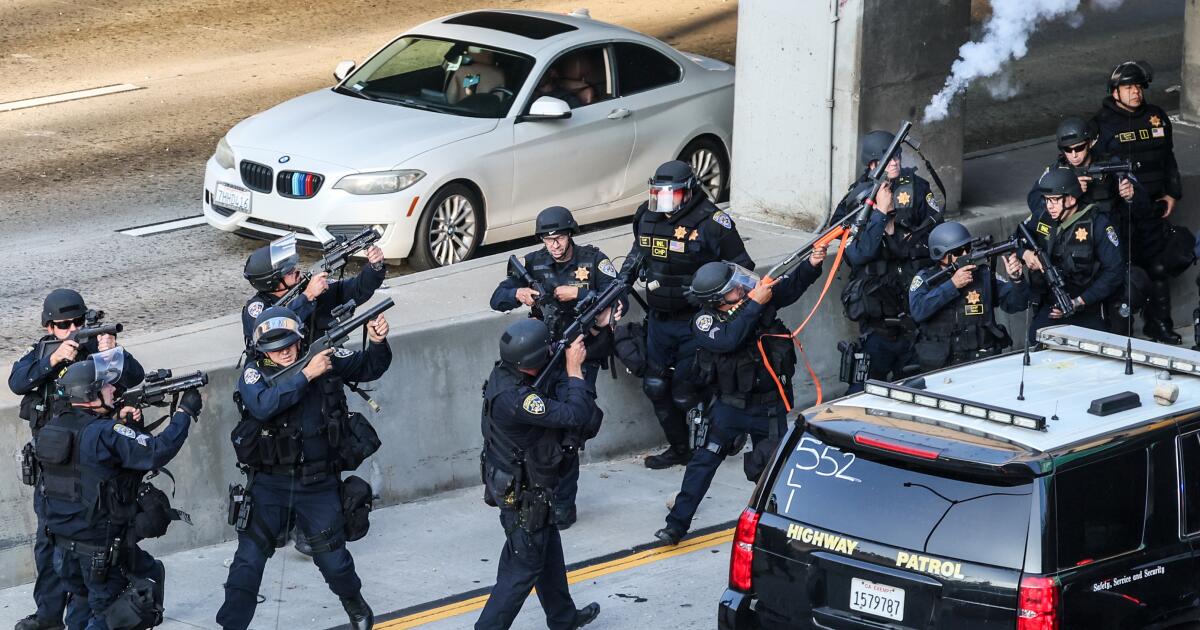Just how unsafe are American streets?
To hear President Trump tell it, killers lurk in every shadow not already filled by rapists and thieves.
California Gov. Gavin Newsom isn’t nearly as dire, pointing out that crime numbers are down.
But “numbers mean little to people,” Newsom lamented during a press gaggle in his office Thursday, where he ruthlessly trolled Trump with a flags-and-all setup that appeared to mock the president’s marathon Cabinet meeting earlier in the week.
Yes, folks, midterm elections are coming and crime is high — in our consciousness if not in reality. Although violent crime and some property crimes have declined in most California cities (and in many major cities across the country), the perils of city living remain stubbornly stuck in our collective psyches.
This angst has augured in another get-tough era of crime suppression, culminating with the fulfillment of Trump’s authoritarian fantasy of National Guard troops patrolling in Los Angeles, Washington, D.C., and potentially more cities to come.
Newsom is now offering up what many have framed as a counterpunch to Trump’s military intervention: A surge of California Highway Patrol officers in strategic locations across the state, basically Newsom-controlled cop boots on the ground to mirror Trump’s troops.
But looking at Newsom’s deployment of more CHP officers as no more than a reaction to Trump misses a larger debate on what really makes our communities safer. Understanding what makes cops different from soldiers — and Newsom’s move different from Trump’s — is ultimately understanding the difference between repression and public safety, force and finesse.
Newsom has been using the CHP to supplement local police departments for years. In 2023, when the Tenderloin area of San Francisco was plagued by open drug use, making it the favorite right-wing example of a failed Democratic-run city, Newsom sent this state force in to help clean it up (though that work continues). The next year, he sent it into Oakland and Bakersfield, both places where auto theft, retail crime and side shows were rampant.
Now, he’s expanding the CHP’s role in local policing to include Los Angeles, San Diego, the Inland Empire and some Central Valley cities including Fresno and Sacramento.
In each of those places, mobile teams of around a dozen officers, all of whom will volunteer for the job, will target specific crimes, criminals or problem areas. These officers won’t just be patrolling or responding to calls like the local force, but hitting targets identified by data or intelligence, or making their presence known in high-crime neighborhoods.
Here’s where Trump’s military approach has an overlap with Newsom’s — and where the two men might agree: It is true that a visible show of armed authority deters crime. Whether it’s the National Guard or the Highway Patrol, criminals, both petty and violent, tend to avoid them.
“We go in and saturate an area with high visibility and view patrol,” said Sean Duryee, commissioner of the California Highway Patrol, standing at Newsom’s side. “The people that have a problem with that are the criminal community.”
The approach seems to be working. I can throw the numbers at you — 400 firearms seized in San Bernardino, Bakersfield, Oakland; 4,000 stolen vehicles recovered in Oakland; more than 9,000 arrests statewide.
But numbers really don’t matter. It genuinely is how a community feels about its safety. Across California, many if not the majority of small and mid-sized law enforcement departments are understaffed. Even big departments such as Los Angeles struggle to hire and retain officers. There are simply not enough cops — or resources such as helicopters or K9 teams — to do the work in too many places, and citizens feel it.
Using these small strike teams of CHP officers fills the gap of both manpower and expertise. And by aiming that usage precisely at troubled spots, it can make underserved communities feel safer, and crime-ridden communities actually be safer.
Tinisch Hollins is the head of Californians for Safety and Justice, an advocacy group that works to end over-incarceration and promote public safety beyond just making arrests. She is “obviously not a huge proponent of sending law enforcement into communities like that,” she said.
But she lived in San Francisco when homicides topped 100 per year, and now lives in the Bay Area city of Vallejo, where the local police have been so understaffed and plagued by scandal that local leaders declared a state of emergency.
She has seen how the CHP has “made an impact” in the Bay Area.
“There are some very effective things happening,” Hollins said.
That buy-in from community, especially skeptical community, is a massive departure from the militarization of Trump, and also hints at the deeper difference between troops and cops.
California has been on the cutting-edge of law enforcement reform for years, though it is a conversation that has fallen from favor and headlines in the Trump era.
In the wake of the murder of George Floyd by Minneapolis police, California outlawed controversial carotid restraints that can cut off breathing. The state put in place a method for decertifying officers found guilty of serious misconduct. It increased age and education standards for becoming a peace officer, increased transparency requirements and put more oversight on the use of military equipment by civilian forces, just to name a few reforms.
Most significantly, Newsom is championing a new vision of incarceration and rehabilitation modeled after successful efforts in Norway and other places that centers on the simple truth that arresting people does not end crime.
Most people who are convicted and incarcerated will return to our streets after a few years at most, and if the state does not change their outlook and opportunities, they will also likely return to crime — making us no safer than the day they were first put into cuffs.
But for a time, it seemed to some as if these reforms with their focus away from enforcement and toward alternatives to incarceration had gone too far. Images of marauding groups of retail thieves invading stores filled the news, and reasonably caused anxiety — leading to Californians passing the still-unfunded, tough-on-crime Proposition 36 that sought to create stiffer penalties for some drug and property crimes, along with mandated treatment for addiction, but which could also take money from rehabilitation programs.
As much as Trump, Newsom’s use of the CHP is the response to that pushback on reform, an acknowledgment that enforcement remains a key piece of the crime-stopping dilemma.
But Hollins points out that the rehabilitation aspect, the most innovative and arguably important aspect of California’s approach to crime, is getting lost in the current political climate.
“It’s not just arresting people that brings crime down,” she said. “The [penal] system isn’t going to deal with the drivers of the crime.”
This is where Newsom needs to do better, both on the ground and in his explanations. It may not be popular to talk about rehabilitation, and certainly Trump will seize on it as weak, but it is what works, and what makes the California method different from the MAGA view of crime.
For Trump, the be-all and end-all is the arrest, and the subsequent cruel glee of punishment. He has called for harsher and longer penalties for even minor crimes, and recently demanded the blanket use of the death penalty in all murder cases charged in Washington, D.C. His is the authoritarian view that fear and repression will make us safer.
“We lost grip with reality, the idea that the military can be out there in every street corner the United States of America,” Newsom said Thursday.
Or should be.
Soldiers on our streets just make even law-abiding citizens less free, and ultimately does little to fix the problems of poverty and opportunity that often start the cycles of crime.
This is the showdown happening right now on American streets, and ultimately the showdown between the Democratic view of crime prevention and Trump’s — soldiers or cops, the easy spectacle of compliance induced by the barrel of a gun or a complicated and imperfect system of community and law enforcement working together.
